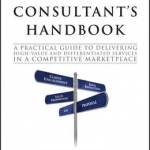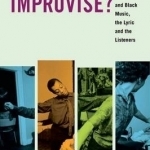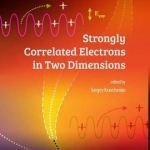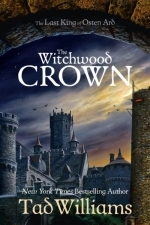
Set of 4 Hadith Books ( Sahih Al Bukhari & Muslim Authentic Book Of Islam ) ( Ramadan Islamic Apps )
Book and Reference
App
Al-Khawarizmi is a trusted name in Islamic Apps development for years. We have sold thousands of...

Industrial Policy and Economic Transformation in Africa
Joseph E. Stiglitz and Akbar Noman
Book
The revival of economic growth in Sub-Saharan Africa is all the more welcome for having followed one...

Consultant's Handbook: A Practical Guide to Delivering High-Value and Differentiated Services in a Competitive Marketplace
Samir Parikh and Wiley
Book
Delivers the essential practical skills needed to consult and make sharp, well prepared interactions...

National Historic Preservation Act: Past, Present, and Future
Kimball M. Banks and Anne M. Scott
Book
Assessing fifty years of the National Historic Preservation Act (NHPA), passed in 1966, this volume...
The Outpatient Regenerative Medicine: Fat Injection and PRP as Minor Office-Based Procedures
Book
This book is unique in focusing expressly on regenerative medicine in the aesthetic field. With the...

Contaqs - the Contact Manager
Productivity and Business
App
Contaqs is your virtual secretary dedicated to organising your address book to allow for fast, easy...

Who Can Afford to Improvise?: James Baldwin and Black Music, the Lyric and the Listeners
Book
More than a quarter-century after his death, James Baldwin remains an unparalleled figure in...

Strongly Correlated Electrons in Two Dimensions
Book
The properties of strongly correlated electrons confined in two dimensions are a forefront area of...
River Cottage Easy
Book
How often have you wished there was a magic formula to make cooking easier? Well, there is. Put just...
Hazel (1853 KP) rated The Witchwood Crown in Books
Jul 22, 2017
Approximately 30 years ago, the first novel in Tad Williams’ Memory, Sorrow and Thorn trilogy was published. Fans all over the world adored this high fantasy story about a young kitchen boy, Simon, who goes on to become King of Ostern Ard. Now Williams’ has returned to the fictional lands with a follow-up trilogy, The Last King of Ostern Ard.
Three decades have been and gone since the ending of the previous series. The Witchwood Crown explores the changes that have occurred since the epic story finished, unfortunately, things are not looking good. Simon and his wife, Miriamele, have suffered a few personal tragedies, leaving them with two fatherless grandchildren. Young Lillia is an out spoken child who expostulates with everyone in order to get her way – she is a princess after all. Morgan, the heir, is rather obtuse in comparison; a lazy young man whose vexatious behaviour constantly causes the Royals to despair. However, this is only a tiny problem in their restless kingdom.
The Norn Queen, an antagonist of the original story, has been asleep for the past few decades. Mortals foolishly believed they were safe from the evil character, yet unexpectedly, she has awoken and is determined to destroy humanity. Too weak to carry out her own plans, she infiltrates the minds of the members of her immortal race, sending them off on perilous missions, for example, to extract blood from a live dragon.
As well as Simon’s city and the Norns, there are several more important characters and locations, each with their own on going storyline. A mix of assiduous and animus personas shake up the peace that had settled at the closing of Memory, Sorrow and Thorn. It is almost impossible to fathom whom the good and bad are, especially when reading from so many different points of view.
If the 700 odd pages did not already give it away, the inclusion of maps and appendixes prove the book to contain an extremely lengthy tale. Flitting from one set of characters to another, it is hard to keep up with the hundreds of names and roles. It does not help that the majority are unpronounceable, full of additional apostrophes making them as unlike English names as possible – a usual trait of fantasy fiction.
Not only are the names difficult to pronounce, the words and vernacular some of the characters use are just as dumbfounding. Thankfully, definitions are provided at the back of the book, but to keep flipping between pages can get quite tedious after a while.
The sheer number of characters makes it difficult to unearth the main storyline. In fact, there does not appear to be a strong plot at all. Judging by the ending, it is as though The Witchwood Crown is only an introduction to the narrative that will begin in the following book.
Reading the primary series first will have its benefits, however, it is not mandatory. New readers, like myself, are able to pick up snippets of past events and piece together the lead up to the current scenario. Although a work of historical fantasy, it is possible to see elements of real life within the story. Dragons and fairies may not exist in our world, but similar beliefs and systems are relatable. For instance, the days of the week are obviously based on the English names: Sunday, Moonday, Tiasday, Udunsday, Drorsday, Frayday and Satrinsday.
The most striking connection between real and imagined is the religious beliefs of different clans and species. Many of the mortals have taken, up what is suggested to be, a new religion. There are so many similarities; it is undoubtedly based on Christianity. Likewise, other beliefs are comparable to pagan rites and ceremonies of the distant past.
The Witchwood Crown is not an easy book to read, neither is it all that exciting. On the other hand, it is interesting. It is equivalent to reading historical information with the added benefit of mythical creatures. This is not a quick read; therefore you need to be dedicated to sitting down and pacing through the story. It is definitely targeted at high fantasy fans – in fact, the original stories influenced George R. R. Martin (A Game of Thrones) – who are used to the length and complexity of the narrative

